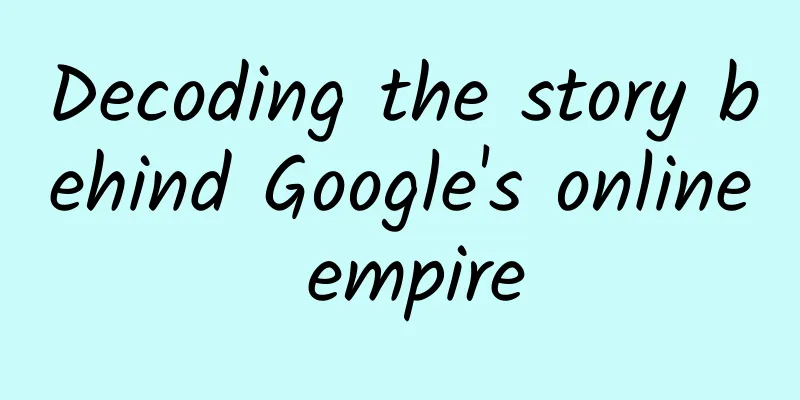Mobile APP is suitable for the elderly + barrier-free transformation, breaking the digital divide

Labs GuideWith the continuous development of science and technology in my country, information technology such as the Internet has made rapid progress. With the emergence of smart phones and their continuous updates and iterations, intelligent services have been widely used. The lifestyles of people, such as food, clothing, housing and transportation, have been completely changed. More and more people are enjoying the convenience brought by intelligent services, and their happiness index has increased accordingly. However, there are still a large number of people who cannot enjoy the convenience due to various reasons. A considerable number of elderly people cannot use smart phones, and people with disabilities cannot use smart phones. This part of the population cannot enjoy the convenience of life brought by intelligence at all. With the continuous development of science and technology, the problem of "digital divide" has also arisen. In recent years, more and more people have begun to pay attention to this issue. In order to enable everyone to obtain and use information equally, conveniently and barrier-free under any circumstances, major mobile phone apps have been adapted for the elderly and made barrier-free. Part 01 Current situation in ChinaOn May 11, 2021, the results of the seventh national census showed that the proportion of people aged 60 and above in China exceeded 18% (data source: National Bureau of Statistics "Seventh National Census Bulletin"), and the degree of population aging has further deepened. The second national sample survey of people with disabilities showed that there are approximately 17.31 million people with visual impairments, 27 million people with hearing impairments, 25 million people with motor impairments, and 154 million people with cognitive impairments in China (data source: National Bureau of Statistics "Second National Sample Survey of People with Disabilities Main Data Bulletin"). At present, the accessibility penetration rate of public service websites and mobile Internet applications (APPs) in my country is low. Most of them have problems such as complex interface interaction and unfriendly operation, which makes the elderly dare not use, do not know how to use, or cannot use them. There are common problems such as lack of text descriptions for pictures, difficulty in operating verification codes, and incompatibility of related functions and devices, which makes people with disabilities and other groups encounter various obstacles in the process of using the Internet. Part 02 Challenges of heterogeneous storageOn November 24, 2020, the General Office of the State Council issued a notice on the implementation plan to effectively solve the difficulties faced by the elderly in using intelligent technology. The "Implementation Plan on Effectively Solving the Difficulties Faced by the Elderly in Using Intelligent Technology" has been approved by the State Council, requiring all regions and departments to fulfill their main responsibilities, strengthen work coordination, establish work records, clarify timetables and roadmaps, focus on high-frequency matters and service scenarios involving the elderly, adhere to the traditional service methods and intelligent service innovation in parallel, effectively solve the outstanding difficulties encountered by the elderly in using intelligent technology, ensure that all work is done in a solid and detailed manner and implemented in place, and provide the elderly with more comprehensive, more intimate, and more direct convenient services. The "Implementation Plan on Effectively Solving the Difficulties Faced by the Elderly in Using Intelligent Technology" describes in detail the specific implementation plan from three aspects: overall requirements, key tasks, and guarantee measures, further promoting the solution of the difficulties faced by the elderly in using intelligent technology, and allowing the elderly to better share the fruits of information development. In March 2020, the "Technical Requirements and Test Methods for Accessibility of Information Technology Internet Content" (GB/T37668-2019) was officially implemented, covering the fields of Internet web content and mobile applications. In February 2022, the State Council issued the "14th Five-Year Plan for the Development of National Aging Services and Elderly Care Service System", which clearly proposed to promote intelligent services to meet the needs of the elderly. Part 03 Age-Friendly and Accessible Definitions➣ Aging-friendly , as the name implies: adapting to the elderly. Generally refers to aging-friendly design in construction design, construction of public facilities (shopping malls, hospitals, schools, etc.), home decoration, etc., including barrier-free design, introduction of emergency systems, etc. Its purpose is to meet the living and travel needs of people entering old age and ensure the safety of the elderly. ➣ Information accessibility refers to the use of information technology to make up for differences in physical functions, environment, etc., so that anyone (whether healthy or disabled, young or old) can obtain, interact and use information equally, conveniently and safely. Aging-friendly and barrier-free transformation are the applications of information accessibility on the Internet. Part 04 Renovation standardsThe transformation mainly includes computer websites, mobile websites and website-related service products (excluding website mobile application APP). The specific technical standards for the transformation are: 1. "General Design Specifications for Age-Friendly Internet Websites" 2. Industry standard YD/T1822-2008 "Information accessibility - Website accessibility rating test method for people with different physical functions" 3. Information Technology Internet Content Accessibility Technical Requirements and Test Methods GB/T 37668-2019 Part 05 Age-friendly and barrier-free renovationCorresponding transformations can be carried out for different user groups, which can be carried out through the following three levels: 1️⃣Interaction level
2️⃣ Visual level
3️⃣ Security level
Part 06 Accessible Technology The accessibility feature is mainly achieved by turning on the Google TalkBack (or third-party screen reader) function to read out the content of the area selected by the user on the screen, so that the visually impaired can obtain information about their current operating area based on the read content, thereby improving the use and interaction experience of the visually impaired. First, let me popularize the steps to turn on the accessibility feature. First, go to Settings, enter Accessibility in the search bar, click the Accessibility button in the Accessibility section, enter the Accessibility Settings page, click the TalkBack button, and turn it on to enable the accessibility service. The details are shown in the figure below: After the accessibility service is turned on, the Android system enters the accessibility mode, and as the user clicks, the click text and operation method are read out. The system's built-in accessibility function only implements the basic voice broadcast function, and does not give the user effective prompts after the user clicks, which still needs further development and implementation.
Use the basic components provided by the Android framework, such as ImageView, TextView, Checkbox, etc., set the content of android:contentDescription, and when the user triggers the focus to select the control, the setting text can be read out.
For scenarios that require dynamic settings, such as the mute icon, which is divided into two scenarios: mute on and mute off, setting android:contentDescription above is no longer sufficient because it only reads one text after setting. Here, it needs to be set dynamically based on the user's clicks. This can be achieved in the following ways:
For ad pop-ups, Android will normally implement the function of making a blank pop-up window disappear when clicking it. However, in barrier-free mode, setting the pop-up window to disappear will cause the user to focus on a large blank area when clicking it, but no content will be broadcasted. One way is to set the broadcast content to prompt the user, and the other way is that developers can cancel the barrier-free service here, so that when the user clicks on the blank area, it will not be selected. The specific implementation code is as follows: windowBg.setImportantForAccessibility(_IMPORTANT_FOR_ACCESSIBILITY_NO_); //where windowBg is the specific control.
Often, when a page is entered, it is often desirable to first select a certain control or area and announce the content to guide the user. This can be achieved by setting android:focusable="true" in the layout or by using the code mView.setFocusable(true) or mView.requestFocus(). Part 07 The adaptation of Hejiaqin APP to the elderly and barrier-freeHejiaqin App serves 260 million users, with a large user base and wide coverage. It provides users with intelligent and high-quality family life services in a deep online and offline integration mode. At present, Hejiaqin App ranks second in the smart home industry of iResearch and has a certain industry influence. The Care Edition of Hejiaqin App aims to provide low-threshold and better-used smart home services for the elderly and people with hearing and visual disabilities. At the 4th Technology Accessibility Development Conference (TADC) on June 15, 2022, Hejiaqin was selected as an influential case of the TADC conference in the 2022 Accessible Information Accessibility Case Compilation and Selection, which was jointly guided by the China Blind Association, the China Deaf Association and UNESCO, and jointly initiated by the Information Accessibility Research Association, Phoenix.com and Phoenix Home Evaluation. It is also the currently included case within China Mobile Group. Part 08 ConclusionWith the advent of the intelligent era, intelligent services are bringing benefits to more and more people. The elderly and people with disabilities are also participants in this era and should not be ignored. More and more websites and mobile applications are joining the ranks of aging-friendly and barrier-free transformation. I believe that intelligent services will become more and more convenient, and we will eventually cross the "digital divide"! 👇 References [1]https://baike.baidu.com/item/%E9%80%82%E8%80%81%E5%8C%96%E5%8F%8A%E6%97%A0%E9%9A%9C%E7%A2%8D%E6%94%B9%E9%80%A0/59218638?fr=aladdin. [2]http://www.gov.cn/zhengce/content/2020-11/24/content_5563804.htm. [3]http://ex.chinadaily.com.cn/exchange/partners/82/rss/channel/cn/columns/sz8srm/stories/WS62f74a13a3101c3ee7ae3997.html. [4]https://zhuanlan.zhihu.com/p/235358447 http://science.china.com.cn/2022-08/15/content_42070084.htm . |
>>: iOS 16.5 is here, with many new features
Recommend
In-vehicle operating system: the foundation of the newly defined software architecture of automobiles
We have released the eighth article in the series...
Landing Page Optimization: 10 Tips to Increase Conversion Rates
Landing page optimization is a crucial process in...
As the number of people with “triple positive” is increasing, what should we do if our baby is “positive”?
Author: Ge Yongtong Children's Hospital Affil...
Kh-BD debuts, is the Russian bomber’s “second spring” coming?
According to a report by TASS on September 16, Ru...
2020 Su Yinhua "Red Dust Thinking" (65 episodes) video
2020 Su Yinhua's "Red Dust Thinking"...
The first lesson of money freedom: "Wallet" management, money management system and methods
The first lesson of money freedom: "Wallet&q...
iOS 14.5's new tracking transparency feature is widely enabled: 90% of users refuse privacy leaks
At the end of last month, the official version of...
In 7 days, we tested 5 fission models!
The article tests the funnel models of 5 fission ...
The key to adjusting the Android window soft keyboard: windowSoftInputMode property setting
windowSoftInputMode is an attribute in Android th...
Product Operations: How to build a product model diagram?
Products are the bond that maintains the relation...
China Mobile's terminal marketing will only invest in 4G next year and cancel 2G/3G subsidies
One million 4G base stations, 250 million 4G user...
A collection of common advertising knowledge and terminology
In the previous action guide for Amazon sellers t...
The father of iPod takes over Google Glass and will give it a new life
[[127560]] Although the title seems a bit incongr...
The lack of brand style makes it difficult for Niu electric vehicles to achieve success
An electric car and a bicycle started running at ...
![[Practical Tips] Frontline marketing personnel have contributed all their ASO knowledge!](/upload/images/67cc40bf827ed.webp)








